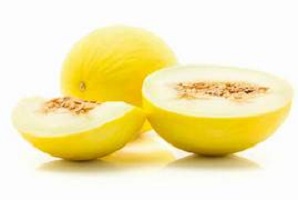Orange Farming Business – Tips on How to Start in Nigeria
Orange Farming – Oranges are a nutritious and delicious edible fruit that can be found in orchards or compounds all over the world.
The most popular fruit that can be grown in a small space or in a greenhouse if the climate in the home is not warm is orange.

This tree’s fruit, scientifically known as citrus reticulata and botanically known as Citrus Aurantium, is not only nutritious but also contains many vitamins and minerals that are beneficial to human health.
This quality alone will provide a significant advantage to any farmer considering orange farming as a viable agribusiness.
Related >>> Vegetable Farming | Profitable Vegetables to Grow in Nigeria
It is readily available throughout the year, but it can be expensive at times.
It is a year-round fruit, but it is particularly abundant in late April, early May, and December when many farmers venture into it or combine it with other farming activities.
Orange Farming Business in Nigeria
Going into the agricultural business of planting oranges is a good idea, but knowing the criteria that will help you succeed is even better.
Buying a young orange tree or seedling is the perfect way to grow a healthy orange. You will learn how to directly plant an orange seed in the soil.
The following suggestions will help you understand how to grow oranges successfully.
- Choose a location for your orange farm.
You can begin small and work your way up; you can buy a plot of land that can hold 40 to 50 orange trees.
After you’ve found a suitable plot of land for your orange, the next step is to clear the bush and prepare the area for planting.
Examine the nutrients in the soil. If any nutrients have been lost in the soil where you plan to grow your fruit, you must replenish them during land preparation.
There are other considerations to consider when choosing land. Is the farm vehicle accessible? If this is not the case, transporting your products to the market or attracting buyers to your farm would be difficult.
Another consideration is the soil’s pH level. Oranges are tropical fruits that grow well in most parts of the world; just make sure that the land (soil) has a normal pH value of 6.0 to 7.0 and that it is fertile enough, though manure and fertilizers will help.
How many orange trees can be planted per acre, or per square meter of land?
A modern orange tree can produce an approximate average of 25, 000 oranges, while a traditional high-density orange tree can produce twice as many oranges per unit of land area.
Using tree plantation growing and pruning methods, however, planting 84 citrus trees (orange) per unit of land area produces about 100,000 oranges.
- Which Soil Type Is Best For Oranges? | Orange Farming
Oranges should be planted in loamy soil so water can quickly drain down into the deep roots and be absorbed.
It’s important to keep this in mind so you can recognize when a soil factor is affecting the plant. It’s also a good idea to test the soil before planting to see if it’s appropriate for growing this citrus fruit.
Another thing to consider is the temperature of the soil. The best temperature for this plant is 26°C, which is ideal for promoting orange tree growth.
It’s worth noting that high temperatures can have a negative impact on orange tree production.
The hardness of the soil is also taken into account, as orange trees prefer light to medium textured soil for maximum productivity.
- Orange’s Climatological Situation | Orange Farming
In a dry climate, orange farming is said to be advantageous. They can thus be grown to a height of 1,500 meters in tropical and sub-tropical regions of the world.
Tropical and subtropical climates with moderate to hot summers and cool winters are thought to be the best for orange farming.
Since orange trees are associated with unique temperature requirements, they are classified as climate-sensitive plants. They are grown all over the world, but only in the right climate.
Do oranges on the tree turn orange? | Orange Farming
The color of the orange fruits you see around you is determined by the growing regions. The color of orange fruits changes to orange when they are exposed to warm temperatures.
In countries where the climate is still humid, on the other hand, the chlorophyll in the fruits has kept the color green.
- Orange Fruit Varieties | Orange Farming
It’s nice to know that picking a high-yielding orange variety is proportional to the amount of fruit you’ll get and how much money you’ll make.
If you want to make a lot of money from orange farming, choose a fast-growing, high-yielding variety that consistently produces a lot of fruit.
You can choose from the best topmost, high-yielding orange varieties mentioned below, depending on the climatic conditions in your area:
Seedless-182, ortanique, shringar, parson prown, temple (royal mandarin), ambersweetare, nagpur santra (mandarin), sumithra mandarin, coorg santra, red navel, darjeeling mandarin, khasi santra, kinnow mandarin, blood red, mudkhed, sathukudi (satagudi), dancy,
An orange tree bears fruit how many times a year?
Some orange trees don’t bear fruit continuously during the year. Citrus blooming season, especially for large navel oranges, occurs only once a year in the spring.
- Water is a Preferable Requirement
Water is an important necessity for orange trees, just as it is for other plants to thrive.
When orange trees are planted in areas with up to 45 inches of annual rainfall, they produce a lot of fruit.
Orange trees can withstand up to 60 inches of rainfall if they are not saturated for an extended period of time.
Though orange trees can withstand prolonged water shortages and produce well when grown in dry conditions, soil that is dry for an extended period reduces the quality of production and the amount of water in the fruits.
- Starting with a Seed and Growing an Orange
It’s critical to understand how to grow an orange from a seed and what it needs. Starting an orange farm with the seed growing will give you a better start when it comes to planting it.
Oranges are best grown during the rainy season because they need a lot of water to grow well and keep the plants from dying. You may also use an irrigation system to provide the plant with the water it needs.
This is possible if you have a thorough understanding of the issues that arise when growing a plant from a seed. You can proceed with the procedures below once you have a good understanding of how long it will take the tree to bear fruit for the first time (between 4 and 10 years) and other issues.
Purchase an orange fruit with seeds and carefully cut it open with a knife. Breaking the seeds inside is not a good idea.
Wash the oranges gently in running water to extract the pulp, then soak them in water overnight to keep them moist before planting time.
- Place each seed around 1.2cm beneath a well-drained soil surface prepared in a soil-mix within a small container filled with moist potting soil that is 12 inches deep. When watered, the soil you prepared for it should be able to drain as easily as possible.
Make sure you get enough sunshine. It will thrive whether indoors or out, but it must be held at a temperature of 24 to 29°C. The easiest way to warm the soil to the proper temperature is to expose it to sunlight.
As you watch the seeds germinate, it’s a good idea to apply fertilizer to the soil at least once a week.
Examine the sprouts and discard the weaker ones. During germination, an orange seed is likely to produce three sprouts, one of which will be smaller and slower to grow. This weak sprout is normally removed, leaving the two fast-growing sprouts in the jar.
Often keep an eye on the seedling to see whether it has grown large enough to be transplanted to another container or to an outdoor location for fruit production.
Application of Fertilizer. It’s one thing to apply fertilizers to plants; it’s another to know when to apply them and which ones are best for which crops.
To get a better result, learn what essential nutrients, such as minerals, an orange tree requires to grow and develop properly.
This will help you focus your thoughts on the type of fertilizer to use in order to provide the plants with the nutrients they need to prevent malnutrition.
- The Spacing of Orange Trees
Try to space the orange tree as evenly as possible so that it receives enough sunshine, air, and other nutrients to thrive.
In most cases, the distance between trees, measured in meters, is determined by the type of soil used and the method of cultivation.
As the shades rise, you must stop crowing them. Orange trees that are full-sized or regular can reach a height of more than 20 feet. As a result, make sure the trees are spaced 12 to 25 feet apart. If there are a lot of rows, they should be spaced at least 10 feet apart.
- Orange Tree Maintenance & Care | Orange Farming
The strength of your orange tree’s productivity and the profitability of your orange farming company will be determined by how you care for and treat it.
Oranges, like any other herb, are susceptible to a variety of diseases and pests.
What is the average lifespan of an orange tree? Is an issue about orange farming that is close to the previous one?
Rotting of the roots, gummosis, and other diseases including collar rot, damping off, and twig blight is examples.
Snail, citrus leafminer, thrips, blackflies, and other pests are among them. The avoidance of the above-mentioned pests and diseases is what care and maintenance of orange trees entail.
Keeping this in mind will help you be on the lookout for diseases and pests, allowing you to handle, monitor, and maintain them efficiently and without causing any harm to the fruit tree.
For pest and disease prevention and control, get the right chemicals from agro farms.
Orange Farming | What is the average lifespan of an orange tree?
Orange trees have a much longer product lifetime than other fruit trees cultivated around the world.
According to Four Winds Growers, a family-owned nursery specializing in citrus and edible fruit production, the lifespan of a properly maintained citrus tree, including oranges, is 50 years or more.
Please Read >>> Fast Food Restaurant Business in Nigeria
Not only will they survive, but they will continue to produce fruits that are not popular among fruit-bearing trees.
- Orange Harvesting
Actually, at the age of one year, a fully grown orange tree matures, and the fruits begin to fall from the trees as they ripen.
Fruits should be selected as soon as they begin to fall from the tree, and any that are still on the tree should be harvested during the first harvest.
Depending on the orange variety you are growing, the harvest always increases during the fourth year of fruit-bearing.
Citrus cultivators’ experiments have shown that a total of 50 oranges can be harvested from each tree during the first harvest. However, after proper establishment and management, each orange tree can produce 500 fruits.
Orange Farming | How long does it take for an orange to grow or bear fruit?
Fruits should be selected as soon as they begin to fall from the tree, and any that are still on the tree should be harvested during the first harvest.
Depending on the orange variety you are growing, the harvest always increases during the fourth year of fruit-bearing.
Citrus cultivators’ experiments have shown that a total of 50 oranges can be harvested from each tree during the first harvest. However, after proper establishment and management, each orange tree can produce 500 fruits.
What are some of the advantages of eating an orange?
Citrus fruits, especially oranges, are one of the most popular fruits on the market today due to their numerous health benefits.
According to studies, one orange contains the same amount of minerals and vitamins as 130 percent of the vitamin C needed by the human body per day.
The fruits’ other nutrients help to avoid diseases, and their high water content keeps you hydrated at all times.
Also, keep in mind that oranges will begin growing fruit in the first year of cultivation, but only in small amounts.
As the year progresses, it produces a greater number of fruits per tree, making orange farming very profitable.


